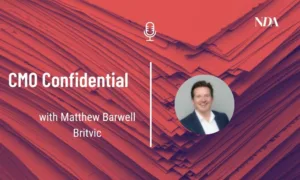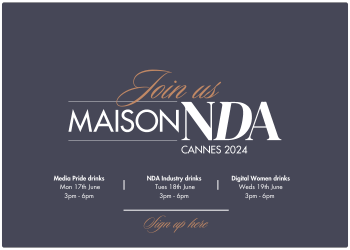CMO Confidential: Adtech profiles CMOs at leading adtech companies to discover what the CMO role means to them, why it’s needed and what industry trends they are harnessing to drive success. Next up is Lori Goode, CMO, Index Exchange.
What does the CMO role mean to you?
The CMO is a critical growth function for a company; from driving awareness and consideration
through retention and loyalty, the CMO’s work spans the entire customer lifecycle.
The responsibilities within the CMO’s remit can vary greatly depending on the size and sophistication
of the company, but ultimately it’s a role that is responsible for a deep understanding of the
customer, industry, and ecosystem, and serving as a bridge that helps connect the business, product,
services, and employees to the customer in a way that provides clear benefits to the customer’s
needs, and value to all stakeholders.
Why does an ad tech company need a CMO role?
Historically, ad ech companies often leveraged marketing for specific, targeted initiatives,
depending on the stage of growth for the company. Many of these companies were initially small
startups, and marketers were needed to develop collateral and sales materials, host or sponsor
events, and connect with customers at scale, whether through emails, website, or other channels.
Today, adtech companies need more than the end marketing deliverables to compete in a cluttered
and ever-changing market. In adtech, the CMO must create a holistic, long-term strategy to drive
company growth, with traditional marketing deliverables being tactics to achieve the company’s
overall goals.
Adtech is also notoriously complex and constantly evolving; CMOs play an important
role in simplifying the complex, and delivering their company’s messaging in a way that is both
differentiated and resonant to their customers.
How has the CMO evolved over the last 5 years?
There’s been a lot of conversation recently about the demise of the CMO role as more Fortune 500
companies announce the removal of CMO “role” from the C-suite. The reality is there is no real
demise of this role happening, but rather a recognition of how wide-ranging this role can be, and
how CMO roles have evolved into something beyond only marketing functions.
The title evolution does not mean that marketing is less important, but that the title itself should be more reflective of the expansion in responsibilities. As the CMO engages with just about every function within an organisation, we see the natural tie-ins across strategy, data and research, product, customer
experience, and corporate social responsibility, to name a few. These are functions or competencies
CMOs are already involved with, and the natural evolution of the CMO is to think holistically about
these internal connection points that will lead to growth.
This is true in my role certainly. As CMO of Index Exchange, I lead marketing and communication
functions: comms and PR, brand, content, creative, digital, events, memberships, product marketing,
localisation, surveying, etc., but I am also responsible for our company’s employee learning and
development and am executive lead for sustainability and DEI.
With such wide-ranging responsibilities, how do CMOs keep up with the speed of technological
change and the change in customer behaviours it drives?
The CMO must remain curious, maintaining a test-and-learn culture within their organisation.
Developing a strong network that shares information and learnings, reading the trades, attending
conferences, speaking with peers and customers, and ensuring their team has a forum for sharing
emerging trends and raising new opportunities will ensure the CMO stays ahead of changes.
What misconceptions of the CMO role come from the rest of the C-suite and how do you
overcome them?
There are two misconceptions I see most often—less around CMOs specifically, and more about the
marketing function. One is the perception that marketing is a cost centre versus a revenue center. If
the C-suite views marketing as an expense and not an investment, they aren’t getting the full value
out of the function. There’s a reason that companies who invest in marketing during tough economic
times far outpace the revenue of those who tighten or cut budgets. If this is an issue, CMOs should
consider how they are presenting the strategic plans and expected outcomes and KPIs aligned to
growth.
Too often the CMO presents the tactics as the plan, and the plan is only the output of the
strategy to generate growth itself.
The second misconception I often see is that marketing is colour palettes, logos, or “making
something pretty,” which also leads into everyone having an opinion or thinking the job is easy
(anyone can do it). Those, too, are outputs and end-deliverables of a much more strategic plan.
For example, at Index I led an extensive brand refresh, including updating our logo, color palette,
style guide, and website. But to get to the final branding, I ran an extensive research project that led
to rewriting our company’s mission and vision statements, positioning, and pillars.
The branding was simply the output of the strategic work that articulated our company’s purpose and how we would operate as an organization. The work informed product direction, how we hire and coach employees as reflections of the company, and more.
What technologies at your disposal are you most excited about at the moment in your role?
I’m excited about any technologies that help me connect the dots to better understand our
customers, and how we can best engage with them to deliver outcomes. These are often tools built
adjacent to our CRM platform, product, email platform, or events management tool that provide
analytics and insights across channels on how we can optimise our efforts.
And I’m not sure I can get through this interview without mentioning the significant opportunity
generative AI represents for all of us. We’re doing a lot of testing for how it supports creative and
content at the moment, and I expect AI to increasingly become a productivity tool for the teams.
Who is your biggest personal inspiration in our industry and why?
Inspiration for me comes from all pockets of the industry in big and small ways. I take most
inspiration from characteristics or behaviours—people who have conviction and resilience, and are
both thoughtful and thought leaders. But also, those who are human—people who can make
mistakes and learn from them, treat others with kindness, maintain humility, and do what they can
to advance and advocate for others.











